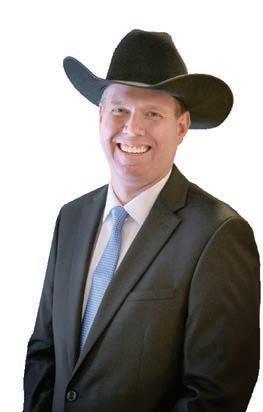










Despite a series of changes in ownership and renovations and fires, the
Creek with Ken Campbell, Jay Lyons, Stephen Rock and Marcus Sweet. They knew

Over the years Fred Krueger has been described as a “citizen archivist” and a “true godsend” for his efforts to preserve and share the stories of those who lived and worked in upper Kittitas County.
As a social studies teacher in the Cle Elum-Roslyn School District for more than 29 years, Krueger, who retired in 1996, adopted a hands-on teaching method to bring alive his lessons. This approach to learning helped him not only make his instruction more relevant but led to him being able to tap into community history that might otherwise have been lost.
Author Paul Fridlund, who has written several Central Washington history books, said that shortly after Krueger arrived in Cle Elum to teach history, he realized it was a subject his students despised because of how it had previously been taught.
“Mr. Krueger came up with a plan to engage the students and give them a sense of heritage, even if they moved to other parts of the world after graduation,” Fridlund wrote. “He offered the kids a
instruction, which modern education theorists would probably described as a form of “inquiry learning,” encouraged students to make real-world connections through their personal research and questioning. It was also a style of learning consistent with Krueger’s earlier training at the University of Washington (UW).
Krueger was born in the small town of Sleepy Eye, Minn. in 1939. He attended local schools in the community and earned a BS in Science and Social Studies with a history emphasis from Mankato State College (now called Minnesota State UniversityMankato) in 1962.
Following his graduation, Krueger taught secondary school in Molville, Iowa and Keokuk, Iowa for three years. In 1965, he decided to further his education and was accepted into the Russian Regional Studies Program at UW.
“I was in the Russian Institute, and there were 25 of us selected in there, and I was the only one that didn’t have a scholarship,” Krueger noted in a 2015 oral history interview recorded for

he spoke Russian, served him well in relating to the Eastern European immigrants who had settled in Cle Elum and Roslyn during their mining heydays.
“There were a lot of Eastern European immigrants there. The immigrants are interesting people. Those from Eastern Europe had little education [but deeply respected getting an education]. When school levies were put up for a vote, they all voted yes,” he recalled.
“So, I was a teacher and I was highly respected. More so than what you would find if I was in a community that wasn’t of such an immigrant ancestry,” he continued.
Krueger said once he had settled into his teaching job, he began incorporating the hands-on teaching methods he learned about in his studies.
“I wanted to teach the kids research skills and so we started with Washington History and it progressed to the point where the state said we could give a local history credit instead of the Washington State History credit. So, the state endorsed what I was doing,” he said.
Additionally, a UW education professor, Dr. John Jarolimek, who Krueger had met during his time at the university, invited him to participate in the TriUniversity Project funded by the National Endowment for the Arts.
For the project, Krueger researched a variety of teaching styles, methods and behaviors, paying attention to such things as body language and feedback. He also was instructed in the use of simulation theory in the classroom.
The latter would prove invaluable in his teaching, especially when it came to acquiring and preserving local primary historical resources like oral histories. In 1969, he received a grant from the state Superintendent of Public Instruction for equipment and supplies such as tape recorders and cameras to help his students hone their primary research skills.
Soon his students were interviewing family members, asking targeted questions about family history, such as immigrating to the U.S., and how they came to settle in the Upper Kittitas County. Many of these projects were later donated to the Central Washington University (CWU) Special Collections.
“Krueger created class projects utilizing primary resources obtained through individual students and their research,” noted Stephen J. Hussman, former Chair of Library Services and University Archivist at CWU.
“Often these projects resulted in locally significant class and school presentations including oral histories, photos, manuscripts, letters, family recipes, recollections of travel to the new country (immigrant experience) and more,” Hussman noted in an article that appeared in the Journal of Western Archives in 2014. “He was credited as one of the first teachers in the locale to utilize simulation and primary resource material in class instruction.”
The self-effacing Krueger remains proud of the fact he was among the first high school history teachers to use simulations to teach the importance of economic factors in history, something standard in most history books today. For example, one of the simulations might have a student designated as a farmer and there would be “fate” cards regarding such concerns as bad weather, a bad year for crops and other challenges.
“Those simulations that I was using were so
powerful that to this day [my former students] still remember them,” he said, adding that he conducted post-simulation game discussions because the students would become so emotionally invested in the results.
When talking about his teaching days, Krueger is quick to credit his former students for any success he might have had. He said the most meaningful achievement during his long career was “seeing the kids’ work. The quality was amazing. I had one piece of work that was museum quality for display and unfortunately they put it in the doggone NWI [Northwest Improvement Company] store window which faces south and has direct sunlight and it just ‘pssst’ [faded away].”
Over the years Krueger’s students were able to become involved in several important historic preservation projects. Among them was their work to clean up and preserve Roslyn’s historic cemeteries.
“That grew out of it [the classes] because they had to do some community service,” he said. “I was the first one to start something like this.
“The Roslyn Kiwanis Club had started restoration of the Roslyn Cemeteries and they needed help. The contacted me to see if the students would be interested in helping to clean it up,” Krueger said. “I asked the kids if they wanted to help and they agreed. We were able to create a partnership that lasted for more than 20 years.”
Another successful project with which he was involved was the saving of the Salmon la Sac Guard Station in the Wenatchee-Okanogan National Forest. The station, which the forest service wanted to remove, had been built in 1912 by the Kittitas Railway and Power Company, as a depot, which sought to construct an electric rail line between upper county communities.
“I had one student who picked the railroad depot at Salmon la Sac [for his community service project],” Krueger explained. “When I saw that report, I had to go and check everything out to make sure what I was looking at was accurate. Needless to say, it was accurate.”
Krueger said the research started a preservation movement on behalf of the depot in Roslyn and Cle Elum and within a few weeks more than 3,000 local residents had signed a petition to preserve it, which soon gained support from Washington’s U.S. Senator Henry “Scoop” Jackson. By 1974, the forest service had dropped its plans to demolish the station, which was added to the National Register of Historic Places and the Washington Heritage Register.
Interestingly, while Krueger has had a lifelong interest in history, he was more motivated by the desire to teach his students how to perform quality research.
“I was more interested in the process, and local history was a means to an end,” he said. “The way we started out was with the ninth graders, I told the kids you’re going to have to do some work where there is no book, there are no sources, and I said you’re going to have to use your family.
“Roslyn had lost its school, had lost its grocery store, it lost the No. 9 mine, which was the last mine to close, so what did Roslyn have left that people could take pride in and grow with?”
Answering that question also led him to a long friendship with a former Roslyn coal miner named Frank Musso, who was the founder of the Roslyn Museum and its first director. Krueger said he and Musso, who died in 1986 at the age of 95, “used to sit down and we would talk about these things. And
Frank could see the best resource for Roslyn was its history, its culture, its heritage.”
Because of that connection Krueger has remained a devoted supporter of the Roslyn Museum, helping it to inventory its historic photo and document collections. During my visit, he even pointed to several boxes of photos that he had recently catalogued for the museum.
Scott Templin, chair of the Roslyn Museum, credits Krueger for “the upper valley holding on to one of the largest local heritage collections in the country.
“While most community’s heritage got sold off or lost bit-by-bit, he managed to get his students to save theirs,” Templin continued. “Everyone should have a chance to know and be proud of their family history, and local heritage. We don’t see that much these days.”
Over the years Krueger accumulated a large collection of personal papers, diaries, videos, memorabilia and local history artifacts which he donated a few years ago to CWU Special Collections. Krueger estimated he has to date bequeathed nearly 80 cubic feet of files, photos, photo negatives, slides and other material to Central.
Templin said Krueger has had a major impact on not only the Upper county but on his former students, noting, “I would be willing to bet that if you asked the generation of kids that were lucky enough to have him as a teacher, 95 percent or more would rank him as their No. 1.”
As someone committed to learning throughout his life it was no surprise when, from 1988 to 1990, he was selected for a Fulbright-Hayes Grant to study in China. Three years later he was picked by thenGovernor Michael Lowry and the Washington State Superintendent of Public Instruction, Dr. Judith Billings, to teach in Hyogo Prefecture, Japan, from 1994 to 1995.
That desire to keep busy and to have something new to learn has led him to his latest research project— tracing where residents of Roslyn’s once-thriving black community moved on to after leaving the town. His hope is to collect as much information about those families as he can and give that research to the Roslyn Museum.
“He [Krueger] is still doing amazing work for the community, through research for the Roslyn Museum. That impact will take years to fully appreciate,” Templin said. “To see him still get as giddy as a school boy when he discovers a previously unknown piece of the history puzzle is priceless.”
Krueger also still pays pretty close attention to what’s happening in Roslyn and Cle Elum. He’s pleased to see that the economies of the two communities—depressed when he arrived in 1967 because of the closing of the mines—have rebounded, but is concerned about their futures.
“Roslyn has a heritage but it also has a geography that people like, kind of like Leavenworth,” he said, reflecting on some of the new developments that have cropped up in recent years. “Now, Roslyn is getting loved to death.”
— Richard Moreno is the author of 14 books and is the former director of executive communications at Central Washington University. He was honored with the Nevada Writers Hall of Fame Silver Pen Award in 2007.
He was honored with the Nevada Writers Hall of Fame Silver Pen Award in 2007.


“The Mighty Red” by Louise Erdrich Pulitzer Prize and National Book Award-winning author Louise Erdich has written a deep and complex novel that, on the surface, is about a love triangle in a rural South Dakota farming community. But beneath the layers is a story that is part small town satire, part climate change cautionary tale, part rom-com, and part heist movie.

“Golden: The Power of Silence in a World of Noise,” by Justin Zorn and Leigh Marz
Authors Justin Zorn and Leigh Marz take readers on an unlikely
journey—from the West Wing of the White House to San Quentin’s death row; from Ivy League brain research laboratories to underground psychedelic circles; from the temperate rainforests of Olympic National Park to the main stage at a heavy metal festival—to explore the meaning of silence and the art of finding it in any situation.
“Water: Discovering the Precious Resource All Around Us,” by Olga Fadeeva (Ages 8-14)
Our world is surrounded by water, and we rely on it every day to survive. In Olga Fadeeva’s new book, readers can contemplate just about any questions they might ever have had about the wet stuff.
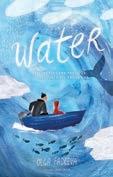
Inland Poetry will host David Coppin Lanegan, its inaugural Laureate, at a reading of his original work on Saturday, April 26, from 4-6 p.m., at the Palace Gallery, 210 W. Fourth Ave., Suite X, upstairs, in historic downtown Ellensburg.

Lanegan is a poet, lyricist, singer and musician, born and raised in Ellensburg. He performs across Washington as a member of the poetry collective Headlight Children and with his punk group The Black Velvet Band. Devotional, his debut collection of 53 poems was published in 2024, and his work has also been featured in The Heartworm Reader, The Q+A Queerzine and Quaranzine. He will serve as Inland Poetry’s ambassador from 20252026.
In celebration of Inland Poetry’s 10th anniversary and National Poetry Month founding members will be reading excerpts from the poems of Baudelaire, Bukowski, Ginsberg, Plath and others. Members of The Black Velvet Band will perform live.
The event is Free and open to the public. Audience discretion advised. For more information go to www.inlandpoetry.com or www.thepalacegallery.
How much is there on the planet? What happens when there is too much water or too little water? Why does it rain? What lives underwater? How do we protect this amazing resource for the future? Fadeeva’s book invites children to learn about the natural resource we have depended on since the beginning of life itself.
“Words Are My Superpower: A Kid’s Guide to Affirmations, Mantras, and Positive Thinking,” by Harold Green III (Ages 8-13)
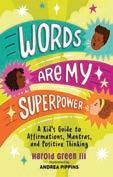
Award-winning author Harold Green III’s newest work invites younger readers to understand how the words they choose have the power to change not only their
own lives but the lives of others. Some of the greatest “villains” in our lives include anxiety, fear, disappointment, and failure. But if we empower ourselves through language—employing affirmations, mantras, compliments, and more—we can overcome anything or anyone who stands in our way while lifting up those around us. Infused with Green’s evocative poetry and Andrea Pippins’s fun illustrations, “Words Are My Superpower” teaches the importance of positive thinking and communication for young people to effect change.
Did You Know?
• The Ellensburg Public Library library has a total of 14,258 library card holders and between November 2023 and November 2024, circulated a total of 166,787 items.
The Reference Desk is written by Richard Moreno and spotlights the newest books in the library.

four of us chase the sun. stone cliffs shot with sagebrush rise from ravines.
wind carries crushed flowers thru the AC. great animals sleep here, their dark backs heave.
they are the hills––their terracotta spines split the silver burlap purple sky.
a fencepost arrives, stands brokeback, crippled by our car in another life.
the splintered wood is stark and harsh, and from the valley a bell tolls.
words begin now, frenzied. words drip from lips words run down chins words soak shirts. we are repentant dogs slavering for the moon.
the hills stand up and begin to walk.
— David Coppin Lanegan
APRIL 1
Agatha Christie’s Literature on Screen, Royal Junction, 7pm
Ellensburg Board Gamers, Central City Comics, 5:15pm

APRIL 2
Women’s Beginner Hiking Workshop, Mountain High Sports, 6pm
Mario’s Fun Day, Dino Discovery, Noon-1:30pm
APRIL 3
Ellensburg Caregiver Career Fair, Hal Holmes, 3-6pm Evening Bingo, Centennial Center, 6-8pm Line Dance Lessons, The Brick, 6pm Geology Lecture Nick Zentner, Morgan Auditorium, 7pm
APRIL 4
Live Music, Valo Tasting Room, 6-8pm Kids Youth Climbing, Central Washington University Rec Center, 5pm
First Friday Art Walk, 5pm Cody Spencer, Nuwave Gallery, 5-8pm Mel Peterson, Gard Vintners, 6-9pm Line Dancing, Ellensburg Dance Ensemble Studio, 6:30-8pm
Quilt Roundup Quilt Show, Kittitas County Events Center, 10am
Micah J, Nodding Donkey, 7-10pm Spiced Rye, The Mule, 7-9pm Daniel Davison, Cornerstone Italian Kitchen, 6-8pm BINGO, Taneum Creek Brewing, 6pm Geology Lecture Nick Zentner, Morgan Auditorium, 7pm
APRIL 5
Carpenter Museum Spring Re-Opening & Reception, 302 W 3rd, Cle Elum, 1-3pm Aardvark Express, Taneum Creek Brewing 1pm Ceramic Trinket Boxes, Gallery One, 11am - 2pm Spring Opening, The Brick House Gardens and Nursery, 9am-4pm
Ellensburg Contra Dance, Hal Holmes, 7:30pm VTC AUDITIONS - Sound of Music, Morgan Performing Arts Center, 9:30am Disco & Denim Fundraiser Dinner, The Ridge Restaurant, 6-8pm
Ellensburg - Cascades Field Trip, 804 Wildcat Way, 8am-4pm
Quilt Roundup Quilt Show, Kittitas County Events Center, 5pm Rotary Park Rebuild and Tune-up, 1254 SW Fifth Ave.,
Ellensburg, 9am-4pm
Canning Dried Beans, 4931 Manastash Road, Ellensburg 9am-1pm
Local Maker’s Market Cle Elum, 801 E. 1st, 10am-2pm
First Friday Art Walk, Downtown Ellensburg, 5pm
Woods Creek, Cle Elum Eagles 649, 7pm
Ellensburg Contra Dance, Hal Holmes, 7:30pm Daniel Davison, Cornerstone Italian Kitchen, 6-8pm
A Night of Discovery, Iron Horse Brewery, 6pm
Geology Lecture Nick Zentner, Morgan Auditorium, 7pm
APRIL 6
Aardvark Express, Taneum Creek Brewing, 6pm
Speed Dating ages 18-21, Fitterer’s Building, 5-6:30pm Paint & Sip, Fortuity Cellars, 1pm
APRIL 7
Ellensburg Swing Dance Project, Hal Holmes, 7pm
Family Art Night, Jerrol’s, 3pm
Peep Day, Dino Discovery, 10am -1:30pm
Michah J, Nodding Donkey, 7-10pm Weaving Circle, Kittitas County Historical Museum, 6pm
Zane Lamprey, Iron Horse Brewery, 7:30pm Creative Writing, 211 W Third Ave., 4:30pm
APRIL 8
Agatha Christie’s Literature on Screen, Royal Junction, 7pm
Beginning Wheel Throwing, Gallery One, 5:30-8pm Free Grant Writing Workshop, 421 N Main Street, 5:30pm Ellensburg Board Gamers, Central City Comics, 5:15pm Bitterness to Blessings Kelly Held, Harvest Place, 6:307:30pm
APRIL 10
Farmstand Workshop, 214 N Pennsylvania Ave, Cle Elum, 5:30-7:30pm
APRIL 11
Kids Youth Climbing, Central Washington University Rec Center, 5pm
Hunter J. de Leon, Euphonium Recital, 400 E University Way, 6pm Feather River, Gard Vintners, 6-9pm ZUMBA, 118 E 4th, 6:30pm-8:30pm Bryson Evans, Nodding Donkey, 7-10pm Daniel Davison, Cornerstone Italian Kitchen, 6-8pm BINGO, Taneum Creek Brewing, 6pm
APRIL 12
Spring Release Party, Valo Tasting Room, 2pm-8pm Auditions A Midsummer Night’s Dream, 400 N Anderson, Noon - 6pm
Rodeo City Repair Cafe, 1900 Brick Road, 10am
Bottoms Up, Brick Saloon, 9pm
Handbuilt Clay Birdhouses, Gallery One, 1-3:30pm
Beginning Fused Glass by Galaxy Glass Studio, 301 N Pearl, 9am - Noon
Line Dance Lessons, Iron Horse Brewery, 6pm
Comedy Show and Dinner, Cle Elum Eagles, 6:30pm Karaoke, Nodding Donkey, 7pm
Daniel Davison, Cornerstone Italian Kitchen, 6-8pm
APRIL 13
Keen G.O. - Get Outside, Yakima Canyon Interpretive Center, 10am
Still Life Drawing, Gallery One, 10am - Noon
Speed Dating ages 55+, Fitterer’s Building, 5-6:30pm
Speed Dating ages 40-50, Fitterer’s Building 7-8:30pm
Still Life Drawing, Gallery One, 10am
APRIL 15
Paint & Sip with Erin Oostra, Dru Bru Cle Elum, 6-8pm
Agatha Christie’s Literature on Screen, Royal Junction, 7pm
Ellensburg Board Gamers, Central City Comics, 5:15pm
APRIL 16
Free Watercolor Paint Night, Nuwave Gallery and Fortunity Cellars, 5:30-7:30pm Trivia, The Mule, 5:30pm Photo Weaving, Gallery One, 5-7pm
APRIL 17
Pint Night Ellensburg Masonic Lodge #39, Iron Horse Brewery 4-8pm PRIDE Silent Auction, Gard Vintners, 5-8pm Guitar for ages 15-115, 201 N Pearl, 6:30pm
APRIL 18
Kids Youth Climbing, Central Washington University Rec Center, 5pm
Open Studio - Dance Your Skirts Off!, 118 East Fourth Ave., 6:30pm
Vaught Rock, Nodding Donkey, 7-10pm Saint September, The Mule, 7-9pm
Daniel Davison, Cornerstone Italian Kitchen, 6-8pm
Andy Shofner, Gard Vintners, 6pm
Dinner & Auction FUNdraiser Ellensburg Class 2025,
The Ridge, 5pm BINGO, Taneum Creek Brewing, 6pm
APRIL 19

Paper Kites, Gallery One, 10-11am Manta, Old Skool’s, 7pm
Daniel Davison, Cornerstone Italian Kitchen, 6-8pm Junk-tiquen in the Burg, Kittitas County Events Center, 9am-4pm Comedy on the Ridge: Jess Everret, The Ridge Restaurant, 9pm
APRIL 21
Noontime Ukulele Club ages 15 +, 201 N. Pearl St., 12:10pm Ellensburg Swing Dance Project, Hal Holmes, 7pm
APRIL 22
Dementia Support Group, 603 S. Chestnut St., 11am
APRIL 24
CWU Orchesis Dance Co “Resilience”, 900 N. Wildcat Way, 7:30pm Girls Night Out, Downtown Ellensburg, 5pm Saltwater Sky, Gard Vintners, 6pm
APRIL 25
Rusty Cage, Clymer Museum / Ellensburg Rodeo Hall of Fame, 5-9pm
CWU Orchesis Dance Co “Resilience”, 900 N. Wildcat Way, 7:30pm
Leah Justine, Gard Vintners, 6pm
Wine & Crime Documentary Night, Mule & Elk Brewing Co., 7pm
Daniel Davison, Cornerstone Italian Kitchen, 6-8pm
Jared Graham, Nodding Donkey, 7-10pm
Winemaker’s Dinner, Gallery One, 5:30pm BINGO, Taneum Creek Brewing, 6pm
APRIL 26
Wildflower and Wind Power Walks,Wild Horse Renewable Energy Center, 10am - 5pm
CWU Orchesis Dance Co “Resilience,” 900 N. Wildcat Way, 2pm
Recycling Event, Second Ave. & Pine St., 10am-1pm
Ellensburg Sugar + Spoon Cookie Dough Pop Up, 1716 S Canyon Road, Noon - 8pm
Daniel Davison, Cornerstone Italian Kitchen, 6-8pm Karaoke, Nodding Donkey, 7-10pm
Under the Covers, Wenas Creek Saloon, 8:30pm
Dirty Trivia, Mule & Elk Brewing Co., 6pm
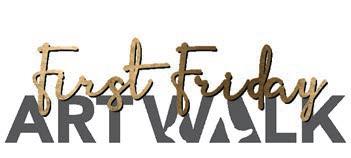
Valley to Valley Wine Tasting & Sale, Gallery One, 1-6pm
Eastern Washington Leadership Summit - Guiding Light: Igniting the Leader Within, Kittas Valley Event Center, 9am-4pm
Kittitas County Chapter Banquet, Kittitas Valley Event Center, 4pm
APRIL 27
Run Like the Wind 2025, Wild Horse Wind and Solar Facility, 8:30am
Spring Craft Fair by Krewphoria Events, Kittitas Valley Event Center, 11am-4pm
Speed Dating Ages 25-35, Fitterers Building, 5-6:30pm
Clay Piggy Banks, Gallery One, 11am-2pm
APRIL 28
Ellensburg Swing Dance Project, Hal Holmes, 7pm
APRIL 29
One Book One County Author Presentation: Natalie Hammerquist, Ellensburg Public Library, 7pm
APRIL 30
Trivia, The Mule, 5:30pm
or to check on events scheduling
In the gem world, a pale, blue stone known as the Ellensburg Blue Agate, or simply the Ellensburg Blue, is considered rock royalty.
Formed through a complex series of geological and volcanic processes that occurred over—literally—millions of years, the agate has been described as one of the rarest gemstones in the world and is only found in northwest Kittitas County, largely in the area known as the Green Canyon notch (up Green Canyon and Reecer Creek roads).
While in the past some blues had been discovered by farmers and ranchers in the alluvial fan below the notch, today nearly all that are uncovered are found on private property at higher elevations (pay attention to the ‘No Trespassing’ signs!).
According to geologists, the agates came about as a result of the gradual depositing of small amounts of minerals mixed with silica-laden groundwater into small cavities or bubbles that formed in cooling volcanic basalt flows.
The agate’s blue coloring, which can range from a light sky blue to much darker azure shades, sometimes with a slight purple tinge, is thought to be the result of trace elements that are present during formation, including copper, iron and manganese.
One aspect of the agate that defines it is its relative hardness.
An Ellensburg Blue will test from 7.5 to 8.3 or harder on the Mohs scale (named for the scale’s creator, chemist Fredrich Mohs), which is used to measure the hardness of a stone. For comparison, a diamond is a10 on the Mohs scale, while talc is a 1.
The earliest records of the existence of the Ellensburg blue can be traced to the native Kittitas people, the first residents of the Kittitas Valley area. Geologist John Prentiss Thomson, who grew up in Ellensburg and wrote a booklet called “Ellensburg Blue” in 1961, said the native people apparently didn’t use the blue gems for arrowheads or tools but instead found them useful when trading with white settlers.
Interestingly, one of those most responsible for establishing the Ellensburg Blue as a desirable stone was Austin Mires, a local attorney and the town’s first mayor. In 1905, he extracted some of the bright blue gems and had them set into rings.
“Had two blue agate ring sets mounted in Seattle,” he wrote in his diary on March 29, 1905. “Cost $10, 14-carat gold.”
About a decade later, Mires hired a stone cutter from Germany and set up a small shop to sell the blue agates in a storefront that was located where Safeway now stands. The business did not prosper and was soon closed.
Mrs. Mires, however, learned from the rock cutter how to cut and polish the stones. She continued to do so as a hobby and, according to a later account, “turned out some beautiful examples of lapidary art.”
The Mires, however, weren’t the only ones to see something of value in the blue stones. A large part of the reason that John Prentiss Thomson was so interested in Ellensburg Blues was because his father, J.N.O. Thomson owned and operated a jewelry store at 318 N. Pearl Street in Ellensburg from 1913 to 1941 (the building
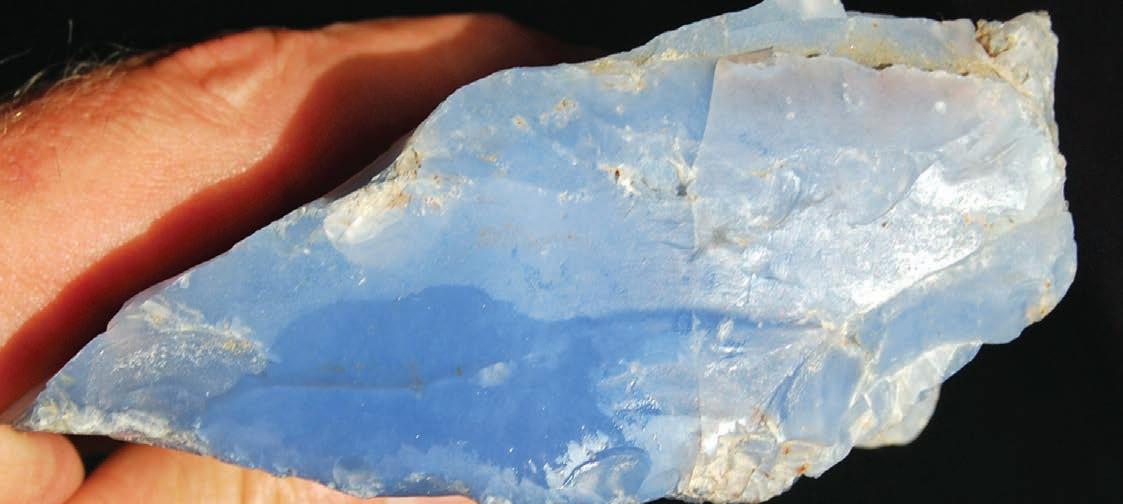
TCenter in downtown for nearly a decade.
bringing guitarists of international renown
will be bringing lute player, John Lenti on April 6 at 2 p.m.. Lenti will continue the commitment to excellence, performing on the 17th and 18th centuries on Baroque guitar and Theorbo. The Baroque guitar is a small instrument usually strung with five double strings and the Theorbo can reach up to 6- to 8-feet. Lenti has been much in demand as a back-up musician for early music concerts throughout the United States and Europe.
The musical lineup over the years has included the likes of Michael Nicolella, Hilary Field, Mark Wilson, Michael Milham, Mesut Ozgen, Virginia Yep and Oleg Timofeyev, a master of the Russian 7-string guitar. Concert programs have featured a variety of music. For example, Pacific Lutheran University guitar instructor Elizabeth Brown performed works by Sanz, de Murcia, Jacquet de la Guerre, Fernando Sor, Justin Holland, Heitor Villa-Lobos, Flippin and Kruisbrink for on Baroque, 19th century and modern guitar. Local classical guitarist John Paul Shields, who played in February, presented a program of Latin American music.
“Performances are usually 45 minutes to an hour with an intermission. It’s very informal. There’s usually time to talk to the artist and ask them about their instrument or the music,” Tamara said. “It gives the artist an opportunity to talk about how they came to that music. It’s very up-close-and-personal. It makes our series unique in that people have an opportunity to talk to international musicians in an informal setting.”
Neil and Tamara recently produced a CD of 19th century music, called “Grand March.” This CD is the first and only recording of all the duets by early 19th century French composer/ guitarist Benigne Henri (fl. 1818).
well as the Manuel de Falla Festival
resulted from the Missoula
Guitar in the Gallery

“It might be a bit old-fashioned, but we still get excited about laying down tracks and producing an actual CD – a material object you can hold in your hands and hopefully still play on a CD player,” she said. “Our latest CD is the first and only recording of all the duets by early 19th century French composer/guitarist Benigne Henri. We love the period image on the cover (designed by Thorpe artist Renee Adams) and Henry’s music is absolutely wonderful.”
Neil and Tamara have conducted considerable research in archives in France, Spain and the U.S. to recover long-lost music for guitar duo, guitar and voice, and chamber music with guitar. Neil has published articles in international journals such as Soundboard and Gendai Guitar, on 19th century improvisation practices for the classical guitar and other topics.
Tamara is currently performing a set of early 19th
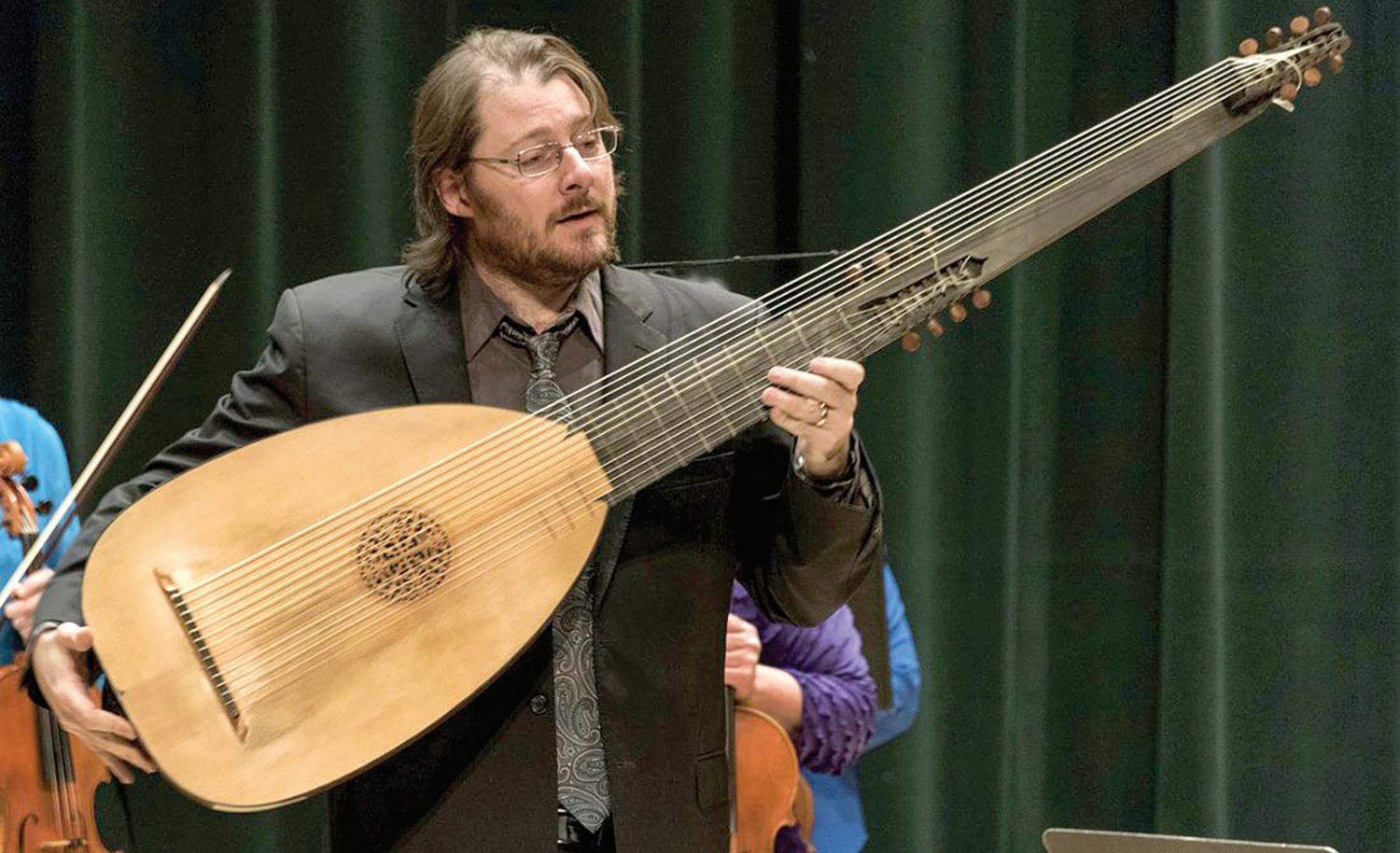
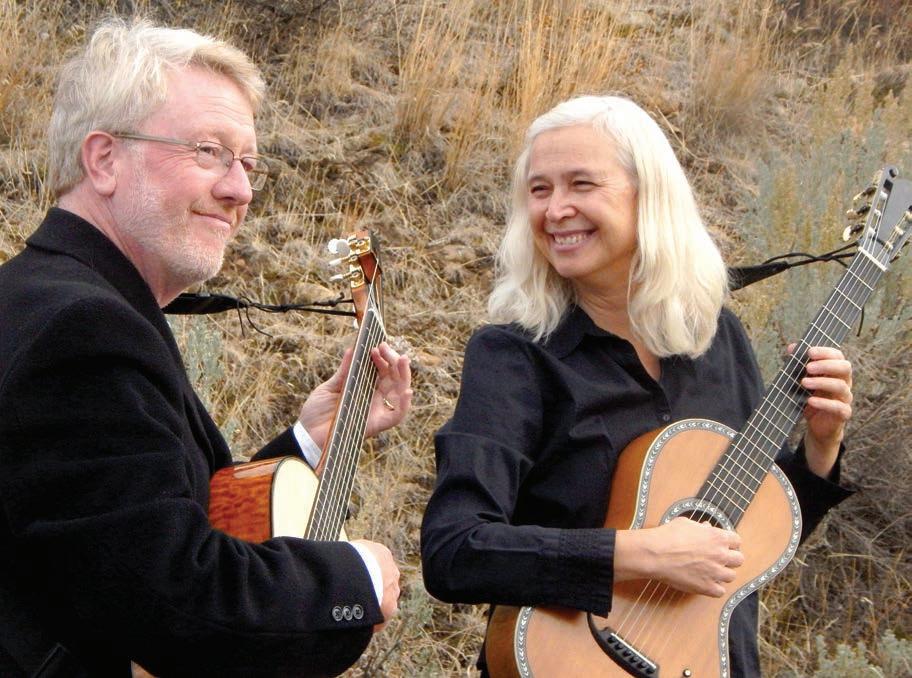
Continued from previous page
century Spanish, Italian and French songs for voice and guitar with Central Washington University professor Mezzo-Soprano Melissa Schiel.
Neil and Tamara continue to perform as the Caulkins Guitar Duo. They have presented concerts throughout the Pacific Northwest and Southeastern U.S. where they were chosen to be as regional touring roster artists. The Guitar in the Gallery series has been a labor of love, presenting three or four performances a season. The duo is thrilled to be, as well as bringing the sounds of classical guitar to the downtown district and the Kittitas Valley.
Rod Harwood is an award-winning writer and photographer. He can be reached at rodneyharwood149@ gmail.com.
When: April 6
Who: John Lenti will perform music of the 17th and 18th centuries on Baroque Guitar and Theorbo
Time: 2 p.m.
Where: Eveleth Green Gallery upstairs at Gallery One
Contact: CaulkinsGuitarDuo@gmail.com
Website: https://caulkinsguitarduo.com
Bon Appétit, Let’s Get Crackin’!
Aside from the profusion of pastels, chocolate and Easter dinner comes an egg-splosion of hard boiled eggs. Add spices for some egg-stra flavor!
COMMON & VERSATILE:
• Salt and Pepper: The classic combination, always a good starting point.
• Paprika: Adds a smoky, slightly sweet flavor.
• Chili Powder: For a touch of heat and depth.
• Garlic Powder: A subtle, savory flavor.
• Curry Powder: A more complex and aromatic option.
FRESH HERBS:
• Dill: A fresh, bright flavor that complements eggs well.

• Parsley: Adds a clean, slightly peppery taste.
• Basil: A more herbaceous flavor that can brighten up the eggs.
• Chives: Provides a subtle oniony flavor.
• Cilantro: If you like cilantro, it can be a good addition.
OTHER IDEAS:
• Celery Salt: Adds a unique, savory flavor.
• Old Bay Seasoning: A popular blend that works well with eggs.
• Dukkah: A Middle Eastern spice blend of nuts, seeds, and spices that can be used for dipping or sprinkling.
• Soy Sauce: For a salty, umami flavor.
Continued from previous page
raining, so I had him pull halfway into the garage so the inside of his truck didn’t get wet. I pulled up a chair and we talked for a good hour or so. I teased him about needing a haircut and told him about my upcoming trip and that I’d catch up with him when I got back.
I didn’t realize that visit would be the last time the funeral home would be a “stop” on his “route.” He ended up taking a fall in April of last year which put him in the rehab center for awhile; then he had a stroke which really stopped his ability to drive; and then his health worsened from there throughout the fall into winter. I still saw him — but I went to him to chat instead of him stopping by. I was blessed to be able to sit with him and his dear wife, Rhonda, at the hospital.
Now this might seem silly to some, but I always promised Joe that when he died I’d take his urn for one last drive around town in his pickup truck. I think he thought I was joking, but I was very serious. Other than directing his funeral this was the one way I could help honor him in a way that I will always remember him.
So on Christmas Eve morning, I loaded his urn in the front seat of his truck, which Rhonda graciously let me borrow for a bit, and spent about an hour and a half driving around and stopping briefly all his usual spots including Holy Cross Cemetery, 7-11, the Ellensburg Golf Course, Kelleher Ford, Woods Hardware and the parking

lot of my funeral home. When we were done, and I had safely returned his urn and truck back home with Rhonda I felt a sense of calm, some would say peace, that I had kept this particular promise to my friend.
A little over a week later, family and friends gathered to lay him to rest at Holy Cross Cemetery in the same family plot that brought Joe and I together several years ago. At the end of the day, I could safely say that Joe received a “good funeral” which is, as the poet Thomas Lynch says, is “one that gets the dead where they need to go, and the living where they need to be.”
So yes, being the town undertaker is a real pisser sometimes — but I wouldn’t have it any other way.
— Henry D. Johnston is owner of Johnston & Williams Funeral Homes in Ellensburg and Cle Elum. He is an avid funeral history buff who also enjoys golfing, boating and spending time with his family.
